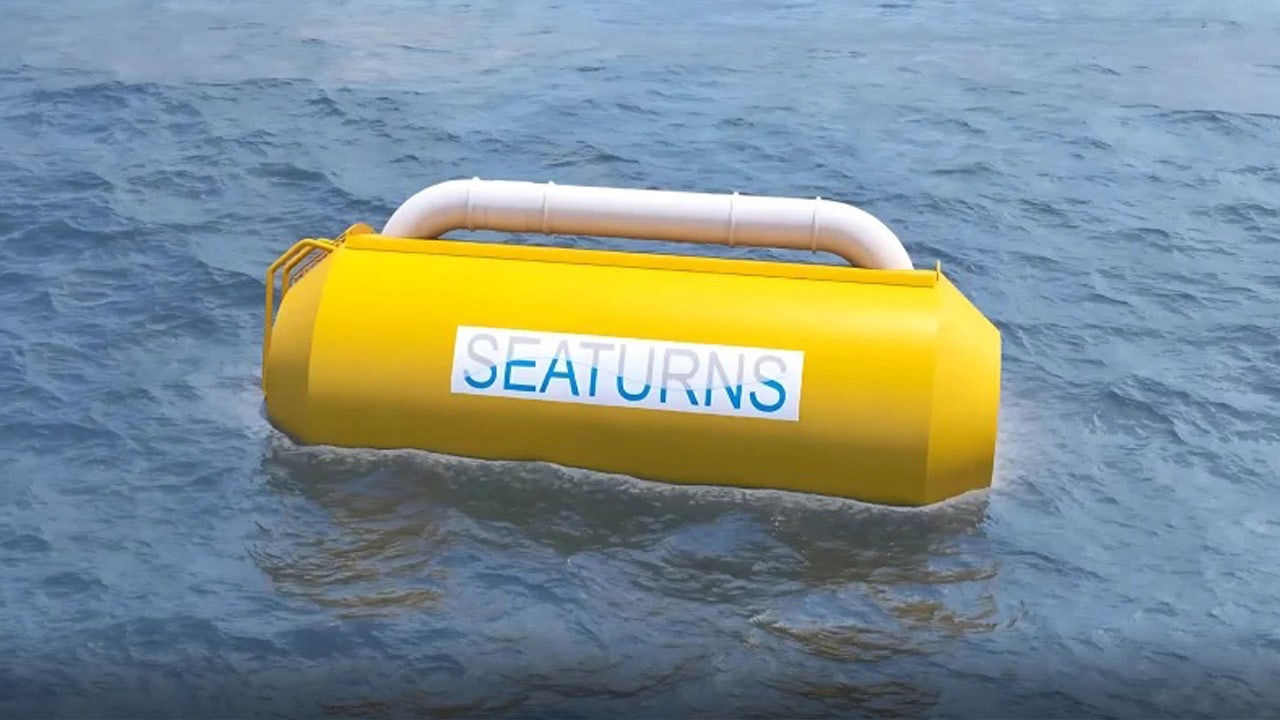In recent weeks, airport Customs and Border Protection (CBP) agents have drawn public outcry for denying travelers US entry based on searches of their phones. A doctor on an H-1B visa was deported to Lebanon after CBP found “sympathetic photos and videos” of Hezbollah leaders. A French scientist was turned away after a device search unearthed messages criticizing the Trump administration’s cuts to research programs, which officers said “conveyed hatred of Trump” and “could be qualified as terrorism.” As the administration ratchets up pressure to turn away even legal immigrants, its justifications are becoming thinner and thinner — but travelers can still benefit from knowing what are supposed to be their legal rights.
Technology
Is it safe to travel with your phone right now?

Your ability to decline a search depends on your immigration status — and, in some cases, on where and how you’re entering the country. Courts across the country have issued different rulings on device searches at ports of entry. But no matter your situation, there are precautions you can take to safeguard your digital privacy.
CBP device searches have historically been relatively rare. During the 2024 fiscal year, less than 0.01 percent of arriving international travelers had their phones, computers, or other electronic devices searched by CBP, according to the agency. That year, CBP officers conducted 47,047 device searches. But even before this recent wave of incidents, inspections were on the rise: eight years earlier, during the 2016 fiscal year, CBP searched only 19,051 devices.
The “border search” exception
The Supreme Court ruled in 2014 that warrantless searches of people’s cell phones violated the Fourth Amendment. But there’s one exception to that rule: searches that happen at the border. The courts have held that border searches “are reasonable simply because they occur at the border,” meaning in most cases, CBP and Border Patrol don’t need a warrant to look through travelers’ belongings — including their phones. That exception applies far beyond the US’s literal borders, since airports are considered border zones, too.
“Traditionally, the border search exception to the Fourth Amendment allowed customs officers to search things like luggage. The idea was whatever you’re taking with you is pertinent to your travel,” Saira Hussain, a senior staff attorney at the Electronic Frontier Foundation, told The Verge. The point was to look for people or things that were inadmissible into the country.
“It can show every facet of your life.”
These days, most travelers are carrying a lot more in their pockets — not only information stored on a phone’s hardware, but anything that’s accessible on it with a data connection. “When you look at devices, the data that you carry with you isn’t just pertinent to your travel. This data can precede your travel by over a decade because of how much information is stored on the cloud,” Hussain said. “It can show every facet of your life. It can show your financial history, your medical history, your communications with your doctor and your attorney. It can reveal so much information that is not analogous at all to the notion of a customs officer looking through your luggage.” Privacy advocates have warned of this issue for years, but in an environment where officers are seeking any pretext to turn someone away, it’s an even bigger problem.
If you’re a US citizen, “you have the right to say no” to a search, “and they are not allowed to bar you from the country,” Hussain said. But if you refuse, CBP can still take your phone, laptop, or other devices and hold onto them.
Permanent residents can similarly refuse a search, but with complicating factors. If someone with a green card leaves the US for more than 180 days, they’re screened for “inadmissibility” — reasons they may be barred from entry — upon returning to the country. Green card holders who have certain offenses on their record may also be deemed inadmissible. That appears to have been the case with Fabian Schmidt, a permanent resident whose family said he was “violently interrogated” by CBP agents at Boston Logan Airport after returning from a trip to Europe. Because of these factors, permanent residents may not feel comfortable refusing a search, even if doing so wouldn’t bar them from entering the country.
Visa holders have fewer rights at ports of entry, and refusing a search could lead to them being denied entry to the country.
There are two types of device searches CBP officers can conduct: basic and forensic, or advanced. “There’s a distinction that the government draws between searching your phone and just looking at whatever is on it, versus connecting your phone to external equipment to search it using advanced algorithms or to copy the contents of your phone,” Hussain said.
The government maintains that it doesn’t need a warrant to conduct “basic” searches of the contents of a person’s phone. During these searches, Hussain explained, agents are supposed to put your phone on airplane mode and can only look at what is accessible offline — but that can still be a lot of information, including any cloud data that’s currently synced.
“While forensic inspections are powerful, a lot of mischief can happen through the physical, ‘thumbing-through’ inspections that law enforcement can engage in,” Tom McBrien, counsel at the Electronic Privacy Information Center, also told The Verge.
“A lot of mischief can happen through the physical, ‘thumbing-through’ inspections that law enforcement can engage in”
For the most part, courts have avoided the question of whether CBP can conduct warrantless basic searches of a person’s phone or laptop, effectively allowing the agency to do so. But there’s one geographic exception to this rule. Last year, a federal judge in New York’s Eastern District ruled that CBP can’t conduct any warrantless searches of travelers’ devices. That ruling doesn’t apply anywhere else in the country, but the district includes John F. Kennedy Airport in Queens — the sixth-busiest airport in the US. That ruling applies to both basic and forensic inspections.
Elsewhere in the country, judges have imposed some limitations on advanced searches. Warrantless forensic searches are allowed in some places and prohibited in others, depending on how different federal circuit courts rule. The Supreme Court could clear this up with a ruling that applies nationwide, but it’s avoided the question for years.
“Your rights will be different depending on whether you’re on a flight landing in Boston Logan in the First Circuit or Reagan/Dulles in the Fourth Circuit,” McBrien said. “Similarly, your rights would be different if you’re crossing the border in Arizona (Ninth Circuit) or New Mexico (Tenth Circuit). This does not make a lot of sense, but the Supreme Court has consistently declined to address these disparities by consistently denying petitions for certiorari in cases that have teed the question up.”
Some courts have been more permissive than others. The Ninth Circuit — which includes Alaska, Arizona, California, Hawaii, Idaho, Montana, Nevada, Oregon, and Washington — prohibits warrantless forensic searches unless officers are looking for “digital contraband,” such as child sexual abuse material. The Fourth Circuit — covering Maryland, North Carolina, South Carolina, Virginia, and West Virginia — prohibits warrantless forensic searches unless officers are looking for information related to ongoing border violations, such as human smuggling or drug trafficking.
In 2023, a federal judge in the Southern District of New York ruled that the border search exception doesn’t extend to forensic searches, for which warrants are needed. (Oddly, the case in question involved a phone search at Newark Liberty Airport in New Jersey, a state that is in a different federal circuit from New York.) These searches, judge Jed Rakoff wrote, “extend the Government’s reach far beyond the person and luggage of the border-crosser — as if the fact of a border crossing somehow entitled the Government to search that traveler’s home, car, and office.”
Malik’s phone was taken even though he’s enrolled in Global Entry
Not all judges agree. In 2021, Adam Malik, an immigration lawyer, sued CBP after agents at Dallas Fort Worth International Airport seized his phone and searched the contents without a warrant. According to the lawsuit, Malik’s phone was taken even though he’s enrolled in Global Entry, CBP’s trusted traveler program. Because the agents couldn’t bypass Malik’s password, they sent the phone to a forensics lab, which extracted all the phone’s data.
A federal court ruled in favor of DHS, saying the warrantless search hadn’t violated Malik’s rights. When Malik appealed to the Fifth Circuit — which covers Louisiana, Mississippi, and Texas — the judges held that the search didn’t require a warrant. But the court also expressed “no view on how the border-search exemption may develop or be clarified in future cases.”
In other words, the constitutionality of these searches is still an open question — and CBP won’t stop conducting them until and unless it’s expressly forbidden from doing so.
These distinctions matter because they determine a person’s basis for challenging device inspections in court. But given the Trump administration’s recent track record of ignoring the law and flouting judicial orders, limiting what can be found on your phone is a safer bet than suing the government over an unlawful search after the fact.
Instead of trying to game out what rights you have depending on your immigration status and what airport you’re flying into (or what land border you’re crossing), the best way to keep your devices safe from CBP is to limit what’s on them.
“We always encourage data minimization when crossing the border; you want to travel with the least amount of data possible,” Hussain said.
Before traveling, you should encrypt your devices and make sure you’re using secure passwords. Travelers should disable biometric logins like Face ID, since some courts have ruled that police can’t compel you to tell them your password but they can use biometrics to unlock your phone.
Travelers should disable biometric logins like Face ID
The EFF recommends that travelers limit what can be found during basic phone or laptop searches by uploading their data onto the cloud and deleting it off their device — and ensuring that it’s fully been removed, since agents can also look through your phone’s “recently deleted” files during basic searches. Customs agents are supposed to keep your phone on airplane mode while they conduct a basic search, but that still lets them see any cached emails, text messages, and other communications. The best way to safeguard this information is to back it up onto the cloud and then wipe your phone or laptop entirely.
Backing up sensitive or personal data doesn’t just prevent others from accessing your device; it also ensures you don’t lose that data if CBP seizes your phone or computer. McBrien also suggests that people turn their phones off when they’re crossing the border or at the airport. “Turning the phone off means that when you turn it back on, it requires a passcode whether or not you use FaceID or other biometric measures,” McBrien said.
In a better legal environment, these precautions wouldn’t be the only meaningful shield between you and a border search. “Without strong constitutional and statutory protections, personal choices about how to configure one’s device and apps can only mitigate — not eliminate — the dangers that border device searches pose to their privacy and speech rights,” McBrien said. For now, if CBP really wants to look through your phone, they’ll likely find a way. But you can still protect yourself as much as possible.

Technology
Analogue’s 4K N64 has been delayed again, but only by a month

The Analogue 3D has been hit with another delay, but should still be launching this summer. In an update on its preorder website, Analogue explained that it’s modern take on the Nintendo 64 “is now shipping in late August 2025,” after previously aiming for July. The company said in a separate statement that the decision was made due to the ever-changing situation around US tariffs.
“Following last week’s sudden tariff changes, Analogue 3D will now begin shipping next month,” the company explained in a post on X. “We’re absorbing the costs — your preorder price stays the same. No additional charges. Late August, the wait ends: reviews go live with everything we’ve been saving for this moment.”
Like its previous hardware, the $249.99 Analogue 3D is a modern console designed to play old games, in this case N64 cartridges. The new console can upscale classic games to 4K and includes multiple display modes to mimic the look and feel of a CRT display, and the company says that it supports 100 percent of N64 cartridges. It was originally planned for a launch in 2024, but has been hit with multiple delays since it was initially announced.
Technology
Lowering your electric bill could be floating in the ocean

NEWYou can now listen to Fox News articles!
What if the answer to cleaner energy was right out on the waves? A new green energy system is set to change how we capture clean power, and it all starts with the ocean. French startup Seaturns has designed technology that taps into the natural motion of the sea. Their water pendulum turbines are built to last, require little maintenance, and turn rolling waves into electricity. Unlike other renewable options, ocean waves offer a steady, often predictable source of power.
Sign up for my FREE CyberGuy Report
Get my best tech tips, urgent security alerts, and exclusive deals delivered straight to your inbox. Plus, you’ll get instant access to my Ultimate Scam Survival Guide – free when you join my CYBERGUY.COM/NEWSLETTER.
Water pendulum turbine. (Seaturns)
How renewable wave energy works using a water pendulum system
Here’s how the water pendulum wave converter works. These large, yellow, floating cylinders pitch back and forth with each passing wave. Inside, the motion causes a column of water to swing like a pendulum, compressing air between two chambers and driving a turbine that generates electricity. This constant back-and-forth movement happens entirely within the hull, protecting components from corrosive saltwater and turbulent seas.
Unlike older wave converters that rely on exposed mechanical parts, Seaturns’ design is simple, reliable, and self-contained. Backed by organizations such as Bpifrance, Horizon Europe, and marine research institute Ifremer, the project has drawn support from across France’s public and private sectors.

Water pendulum turbines. (Seaturns)
Renewable wave energy turbine passes open-sea testing
Seaturns recently completed 18 months of successful offshore testing using a prototype built near Brest, France. Built at quarter-scale, the test demonstrated the system’s durability and energy efficiency under harsh marine conditions. This confirms the power-producing concept as a promising alternative to traditional energy technologies.
Historically, ocean power projects have struggled due to their complexity, cost, and vulnerability to damage. Seaturns’ design addresses these weaknesses head-on. A water pendulum is driven by the horizontal motion of wave surges, allowing it to function efficiently even in shallower waters where wave height is limited. This enables performance in shallower depths, bringing the system closer to shore. Its compact size, modular construction, and simplified deployment process make it attractive for coastal cities, offshore industries, and island communities alike.
And unlike wind or solar power, which can fluctuate with weather and daylight, wave converters can generate energy more consistently, though typically at lower output levels, even when skies are cloudy or winds are still.

Water pendulum turbine. (Seaturns)
Low-maintenance renewable wave energy designed to last
Wave energy offers enormous untapped potential. According to some estimates, global oceans could theoretically produce more than 2 terawatts of renewable electricity using wave technology. That’s enough to power a significant portion of national grids, potentially up to a third of the United States’ energy demand, if fully harnessed, though real-world output would depend on many local and technical factors. Harnessing even part of Alaska’s extensive coastline could significantly reduce fossil fuel reliance in remote communities.
Recent academic studies have highlighted the promise of pendulum-based wave energy converters. Their ability to deliver direct mechanical-to-electrical conversion, combined with structural simplicity, makes them a viable path forward for clean ocean power.
Speaking of power, want to reduce your energy bills while staying cool? Check out these smart ways to beat the heat at Cyberguy.com/KeepCool.
Also, explore the latest innovations in smart thermostat technology for your home Cyberguy.com/SmartThermostats.
Kurt’s key takeaways
Some people point out that wave energy still has its hurdles, like dealing with inconsistent wave patterns and currently lower power output compared to wind or solar farms. Even so, the Seaturns system could be a real breakthrough. Its tough design, simple upkeep, and environmental benefits make it a strong contender for future energy grids. As we keep searching for reliable and sustainable power, wave energy is starting to stand out. Now, the big question is whether creative ideas like water pendulums can help make wave power a key player in the global shift to clean energy.
Learn how to save on electricity at home at Cyberguy.com/SaveonPower.
Would you support the installation of wave energy systems like the Seaturns turbines near your local beach? Tell us why or why not. Let us know by writing us at Cyberguy.com/Contact
Sign up for my FREE CyberGuy Report
Get my best tech tips, urgent security alerts, and exclusive deals delivered straight to your inbox. Plus, you’ll get instant access to my Ultimate Scam Survival Guide – free when you join my CYBERGUY.COM/NEWSLETTER.
Copyright 2025 CyberGuy.com. All rights reserved.
Technology
Superman is a box office hit, but the hard part comes next

Over the weekend, DC Studios’ new Superman feature became this year’s third-biggest box-office debut in the US. The movie’s success is a sign that theatergoers might actually not be quite as tired of superheroes as people tend to think, and that’s particularly notable for Warner Bros., given the studio’s plan to build a new cinematic universe of DC Comics adaptations for the big screen. But making interconnected film franchises work is easier said than done. And even though Superman is putting up numbers, DC might have a much harder time doing the same with its next couple of cape movies.
Though it fell short of A Minecraft Movie’s and Lilo & Stitch’s domestic opening weekends, Superman raked in $125 million stateside and another $95 million internationally, making it WB’s strongest superhero debut since Matt Reeves’ The Batman in 2022. You can see those numbers reflected in the sheer amount of Superman hype (some of which has been weird and gross) that has overtaken social media since the movie first premiered. Because of Superman’s success, DC Studios co-CEO James Gunn is reportedly thinking about a couple of spinoff series revolving around Edi Gathegi‘s Mister Terrific and Skyler Gisondo‘s Jimmy Olsen. But before any of that comes to fruition, the studio first has to sell the public on its next two big tentpole features due out next year: Craig Gillespie’s Supergirl and James Watkins’ Clayface.
Following the disaster that became known as the DCEU, WB was in desperate need of a fresh start and a vision for how it could use DC characters in ways that audiences would actually like. That need led to the creation of DC Studios with Gunn and co-CEO Peter Safran guiding the whole endeavor. Though Gunn had worked on previous DC projects, his DC Studios’ appointment felt like a power move on WB’s part that spoke to its desire to push back against Marvel’s box-office dominance. And while it seemed a little odd that Gunn wanted to launch his new DC Universe with an animated Creature Commandos streaming series for (HBO) Max, it was easy to understand the logic behind his plan to make a new Superman the franchise’s centerpiece.
Superman has always been a pillar of the DC Comics brand and embodied much of what makes the company’s characters compelling across different mediums. In a universe full of gods, alien monsters, and supervillains, Superman represents hope and humanity at its best. He’s a near-indestructible powerhouse, but he’s also just a dork from Kansas who loves his family and believes in the importance of journalism. He’s got a bunch of superfriends, but he also has major beef with deranged billionaires who can’t wrap their minds around the concept of immigrants being people who make valuable contributions to society.
Those basic beats have defined Superman stories ever since the character first appeared back in 1938. And part of what makes Gunn’s new film so excellent is the way it weaves all of those ideas together into a colorful, optimistic joyride that feels nothing like WB’s other recent takes on the Man of Steel.
Some of Superman’s success can also be attributed to the basic fact that he’s a character whose lore most people are familiar with — something the movie acknowledges by glossing over Clark Kent’s tragic backstory and dropping you right into his life as an established superhero. But the same can’t exactly be said for Superman’s cousin, Kara / Supergirl, and B-tier Batman villain Clayface.
Thanks to CBS’s Supergirl and HBO Max’s Harley Quinn animated series, Kara and Clayface have had pretty big presences on the small screen in recent years. But the characters have always had somewhat lower profiles compared to DC’s other heroes and villains. Viewed through one lens, DC Studios following Superman up with Supergirl and Clayface reads as a calculated move to avoid following in the examples of the MCU and DCEU, which were both fleshed out with a series of features focused on the kinds of A-list characters you see on lunchboxes and bookbags. But the upcoming features also feel, at least on paper, informed by the way that studios like Marvel and Disney have gotten into the habit of expanding their genre franchises with ill-conceived spinoffs.
That’s kind of the general vibe you get from the full slate of DC Studio’s projects that are currently in development, which includes a stop-motion movie about two of Batman’s Robins, a True Detective-style Green Lantern show for HBO Max, and a feature about Bane and Deathstroke. A sequel to The Batman — which predates the DCU and exists in its own continuity — is also due out in 2027. And at some point down the line, the studio intends to introduce a new Bruce Wayne who will presumably link up with Superman and Wonder Woman (whose reboot is also in the pipeline) to form some sort of Justice League.

DC Studios
Most of DC Studios’ far-off films and series feel like the kinds of projects you would expect a studio to lead with — ones with instantly recognizable characters whose stories are well known enough to get audiences curious and excited about how they could be done differently. Milly Alcock’s Supergirl, who gets a brief and fantastic Superman cameo, seems a bit better suited to keep the franchise’s current momentum going. But given that we’re so early in this DCU’s existence, a body horror like Clayface, about an actor who becomes a murderous mud monster, feels like a tougher sell (even if Mike Flanagan is writing the script).
It’s easy to imagine Supergirl and Clayface revealing that what audiences have grown weary of isn’t comics-inspired narratives, but sprawling, interconnected franchises more concerned with growth than being made up of good movies. That energy is what dragged the MCU into its flop era and made most of Disney Plus’ Star Wars series slogs to get through, and DC Studios clearly doesn’t want to wind up in a similar position. Turning Clark’s cousin and a lesser-known DC villain into box-office juggernauts might be an even bigger challenge — but Superman at least shows that Gunn and Safran know where to start. And if the studio plays its cards right, this really might be the start of a new golden age for DC.
-

 Culture1 week ago
Culture1 week agoTry to Match These Snarky Quotations to Their Novels and Stories
-

 News6 days ago
News6 days agoVideo: Trump Compliments President of Liberia on His ‘Beautiful English’
-

 News1 week ago
News1 week agoTexas Flooding Map: See How the Floodwaters Rose Along the Guadalupe River
-
Business1 week ago
Companies keep slashing jobs. How worried should workers be about AI replacing them?
-
Finance1 week ago
Do you really save money on Prime Day?
-

 Technology1 week ago
Technology1 week agoApple’s latest AirPods are already on sale for $99 before Prime Day
-

 News5 days ago
News5 days agoVideo: Clashes After Immigration Raid at California Cannabis Farm
-

 Politics1 week ago
Politics1 week agoJournalist who refused to duck during Trump assassination attempt reflects on Butler rally in new book





















